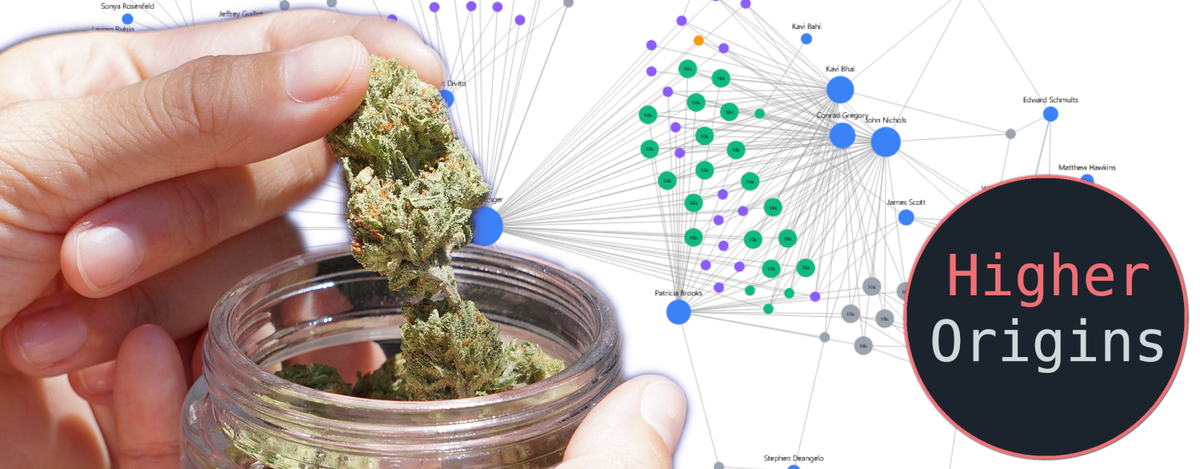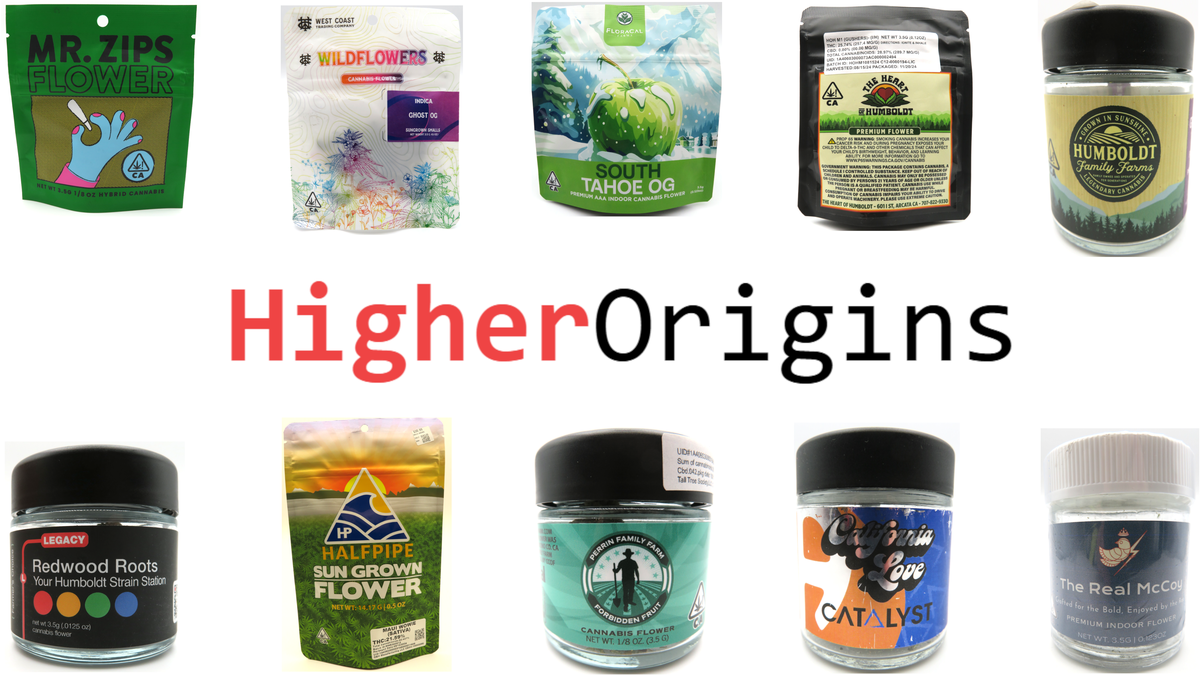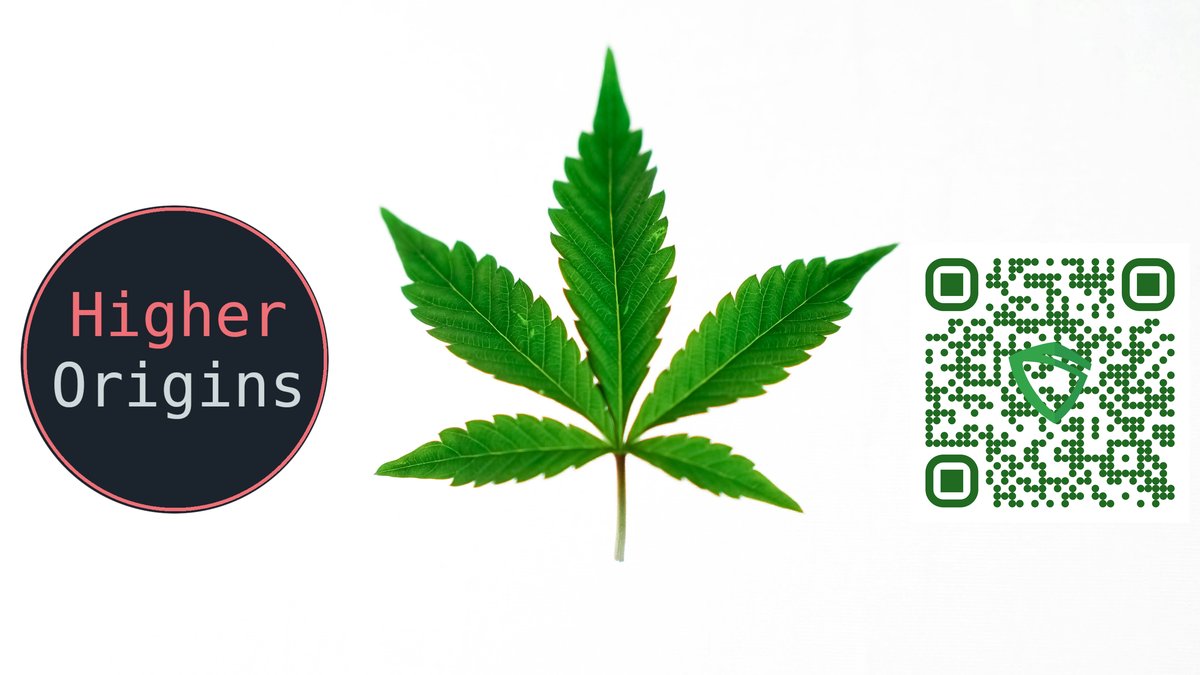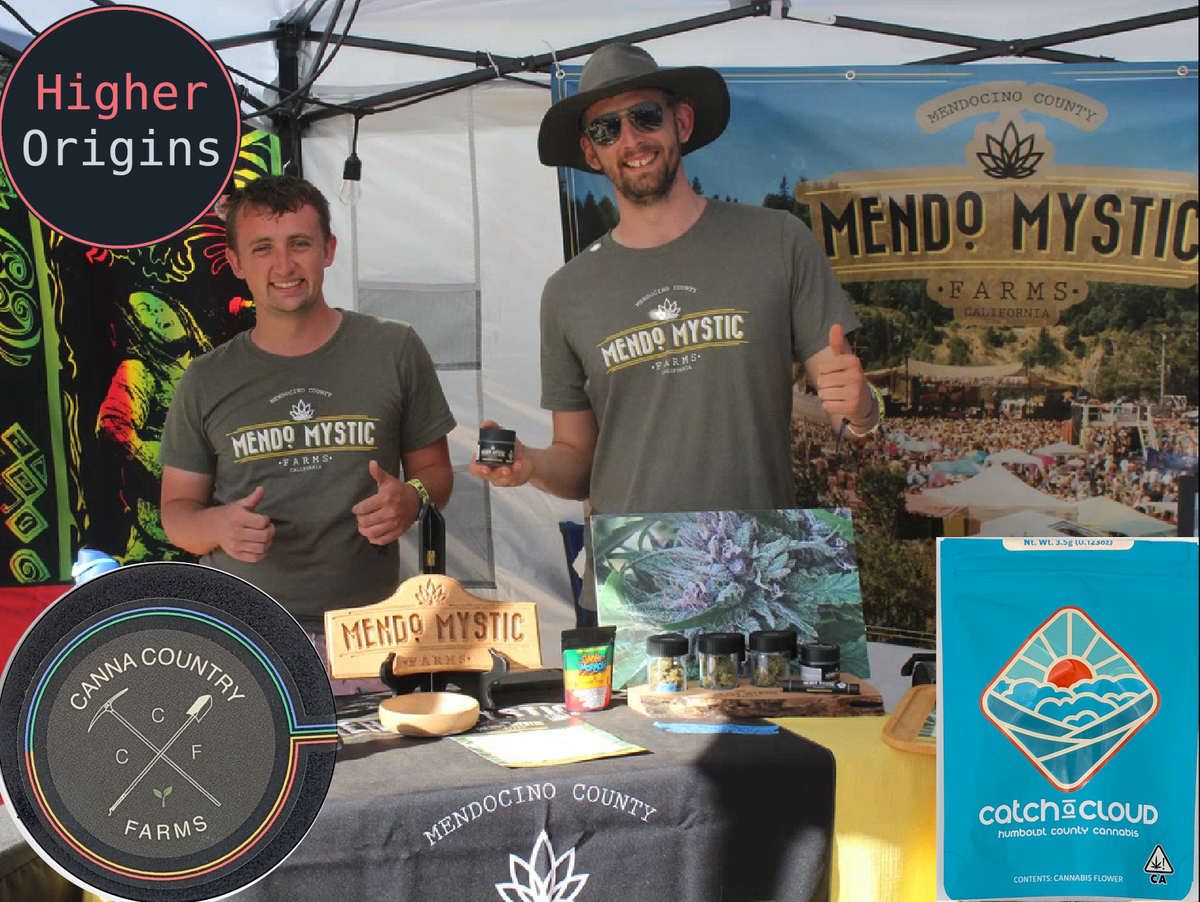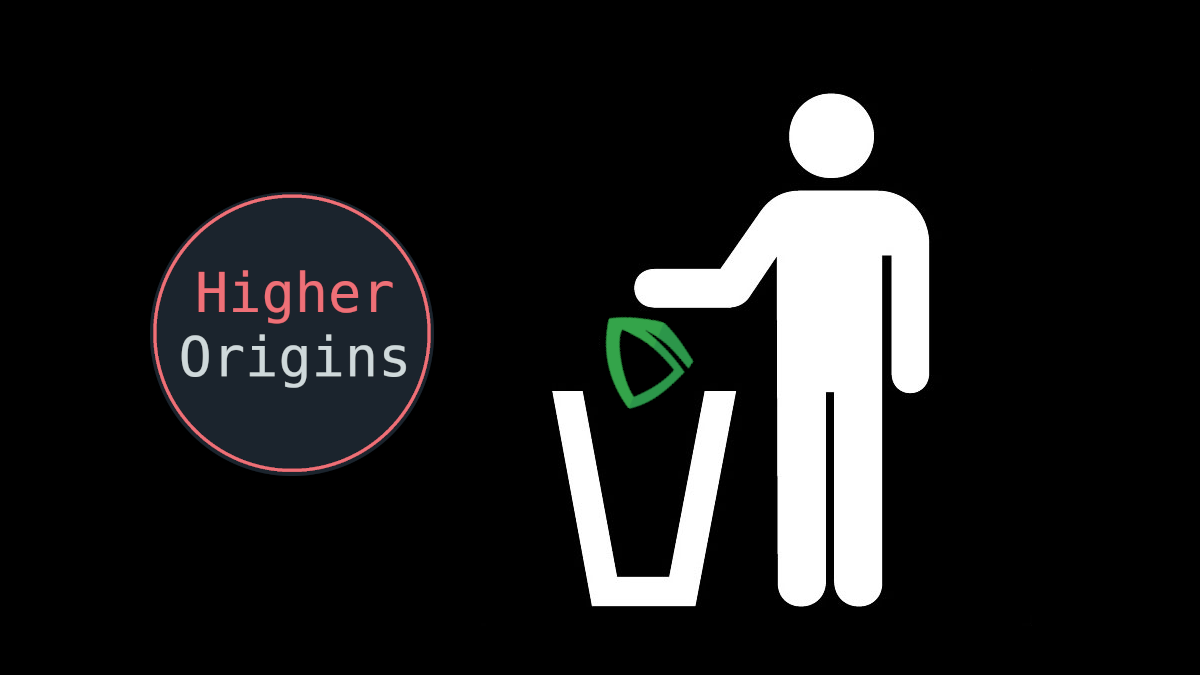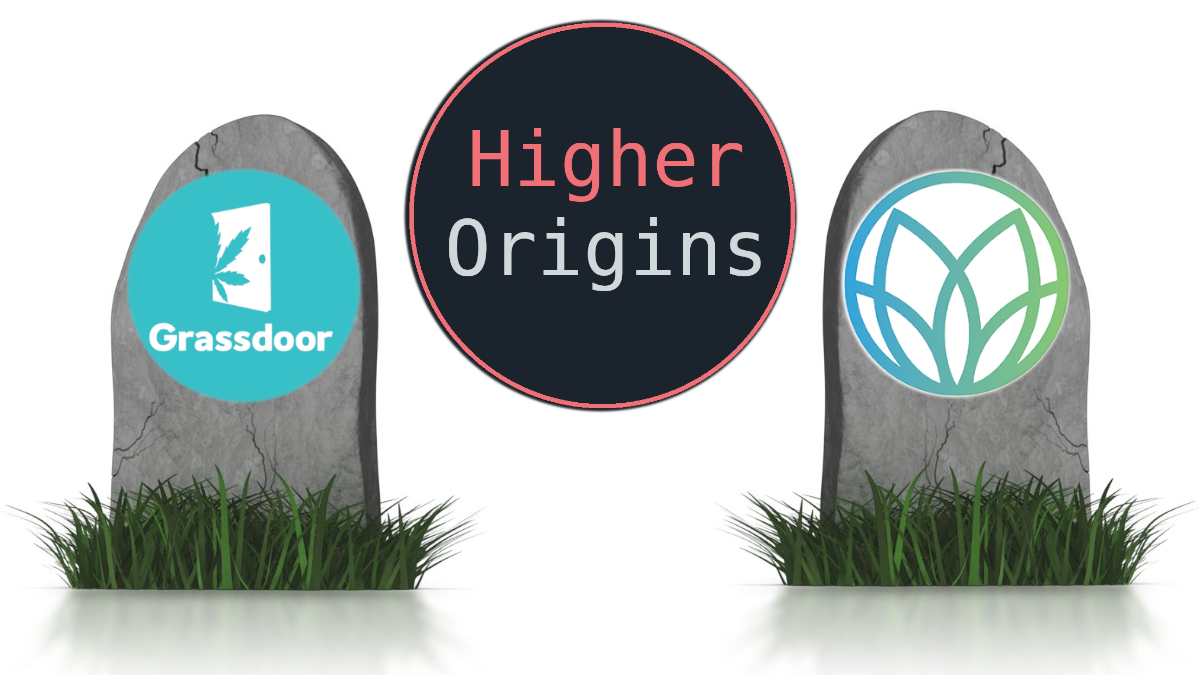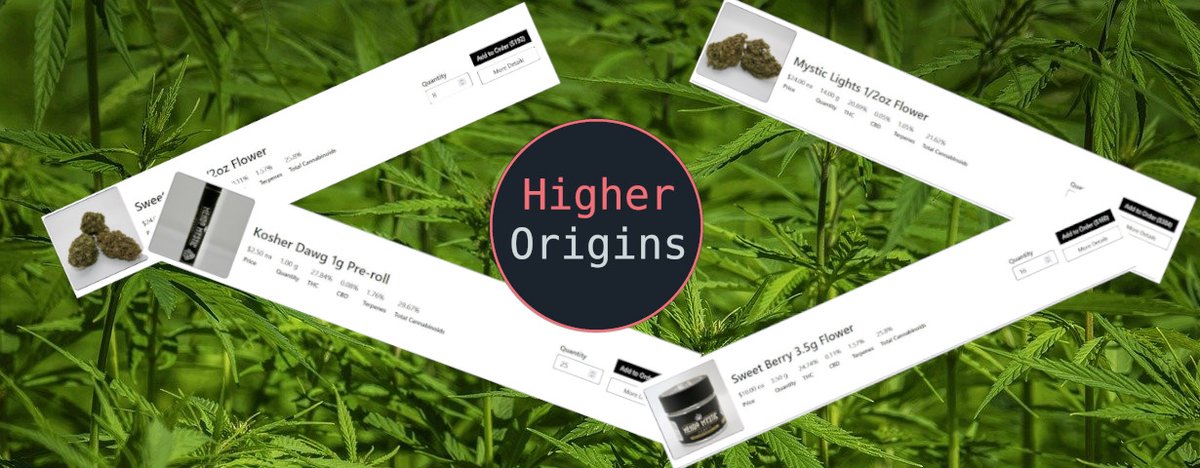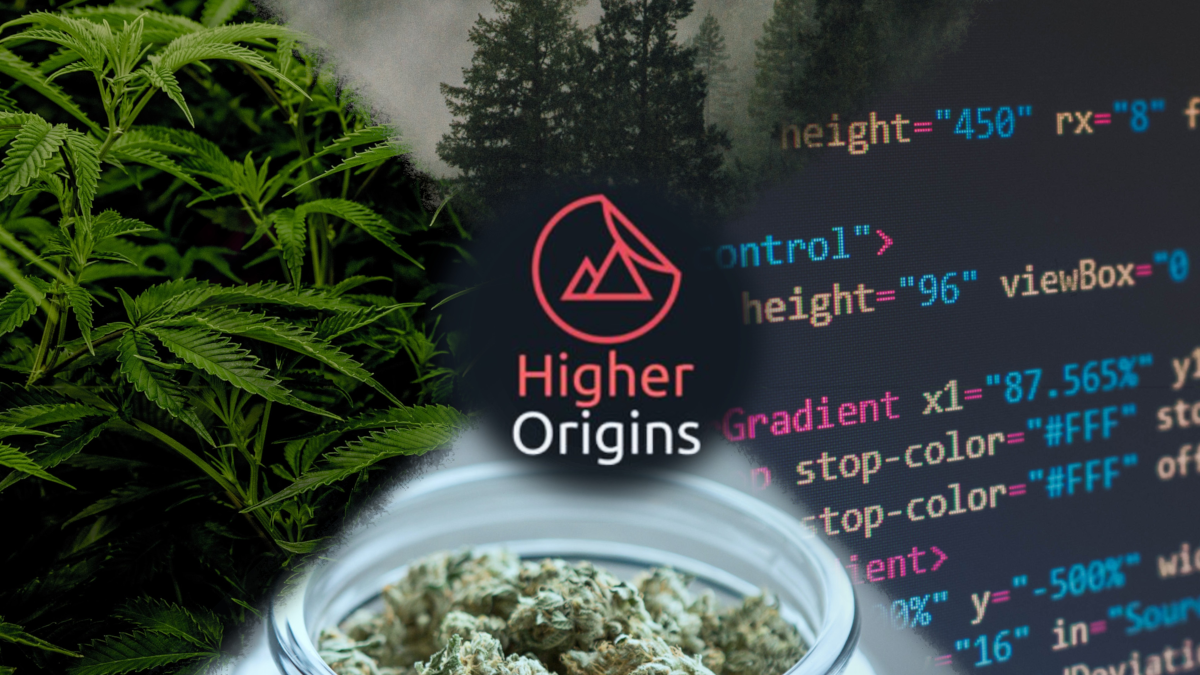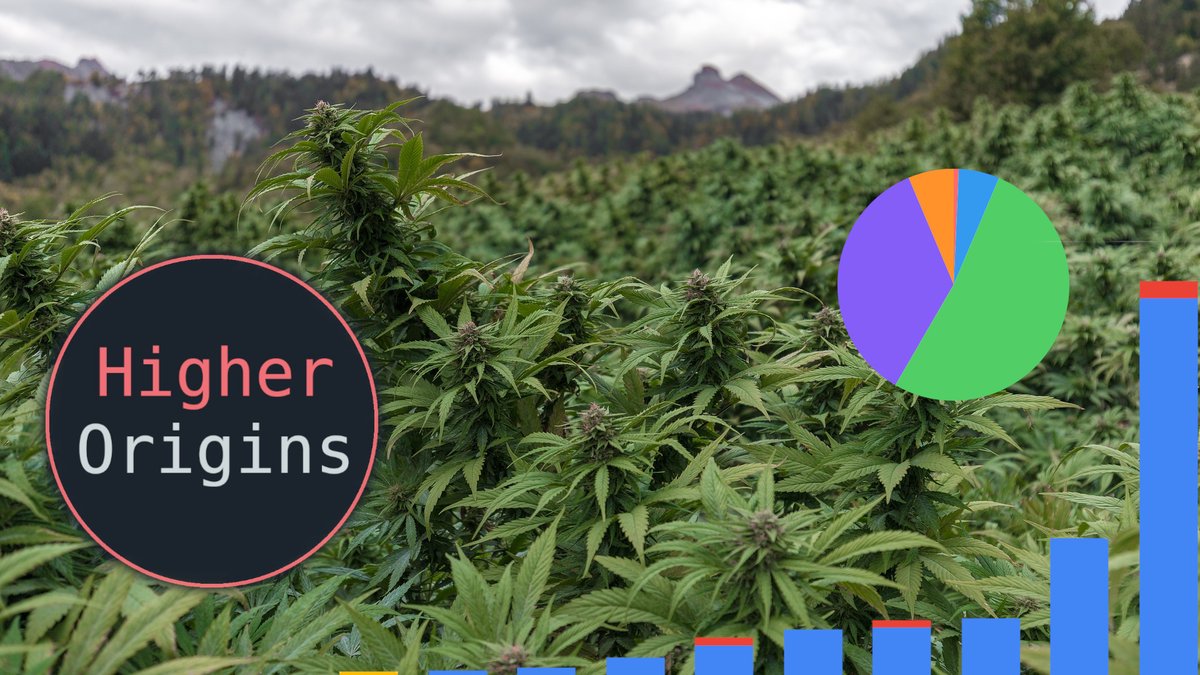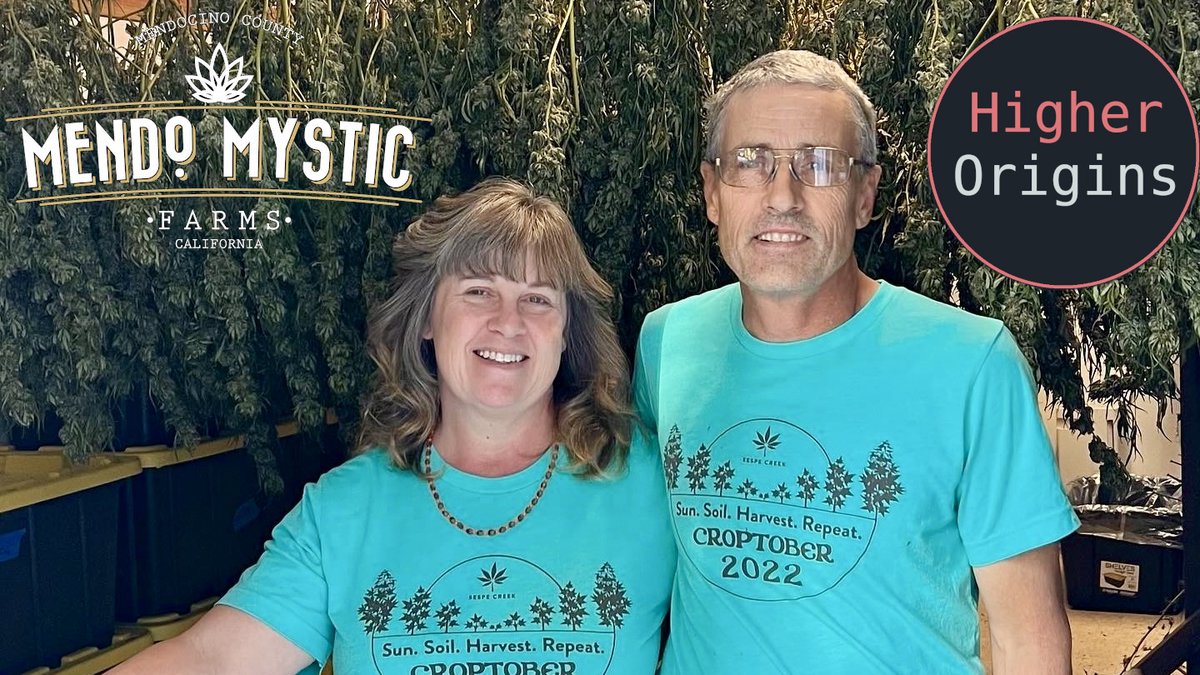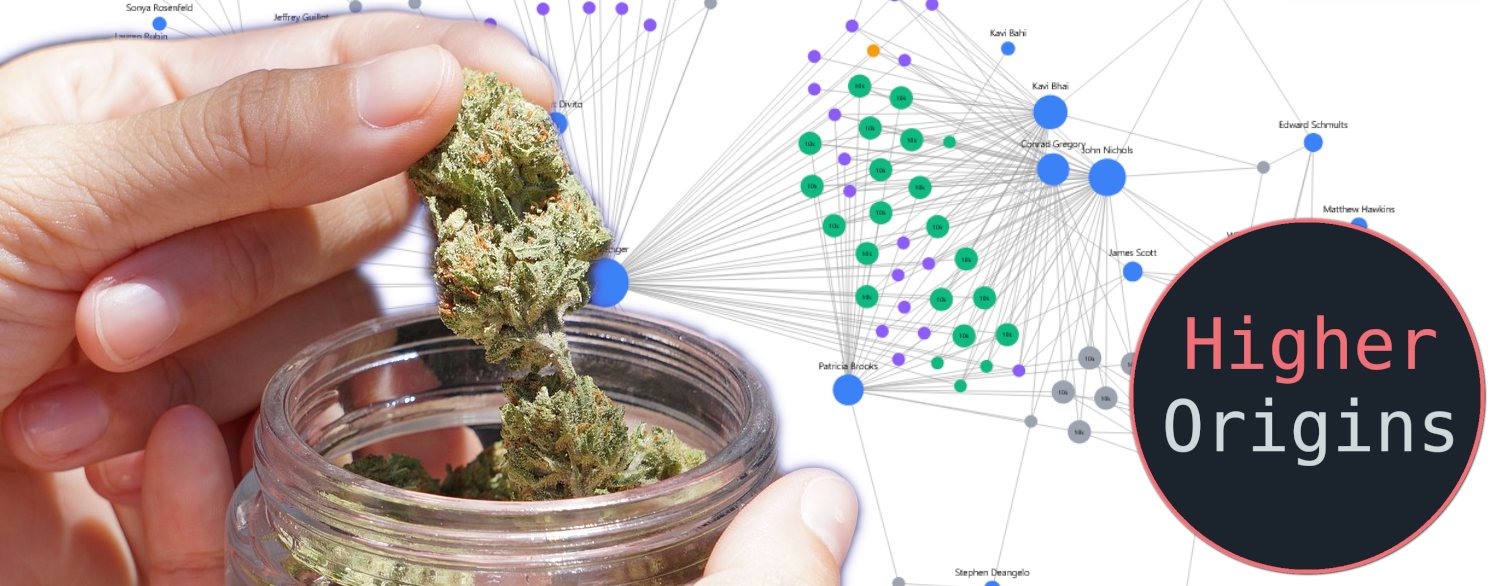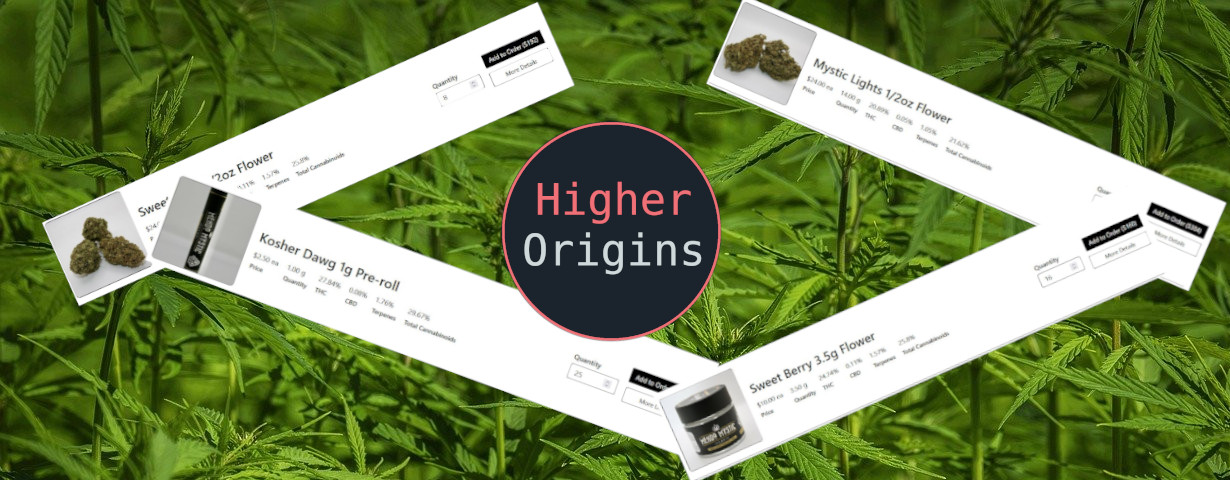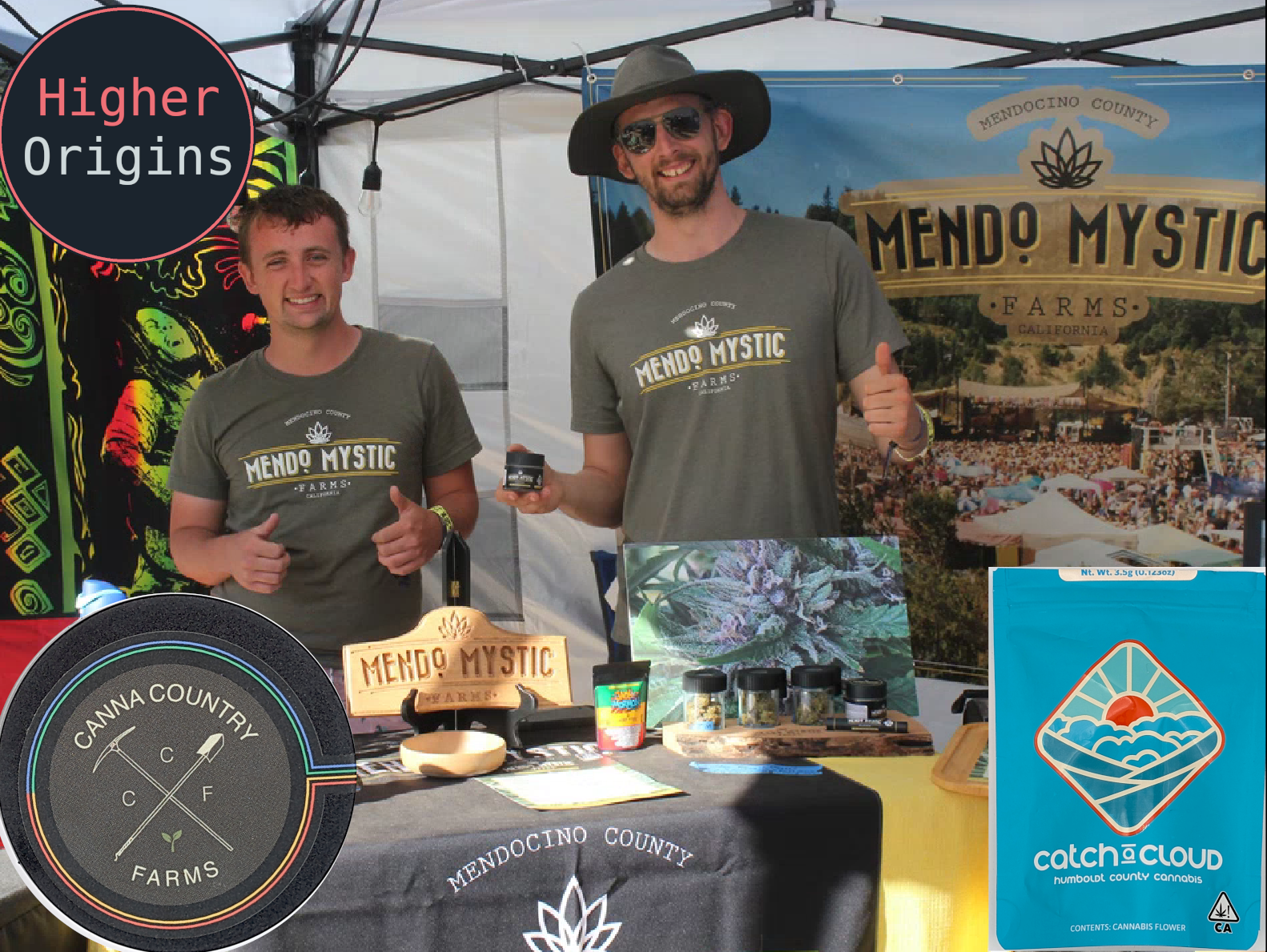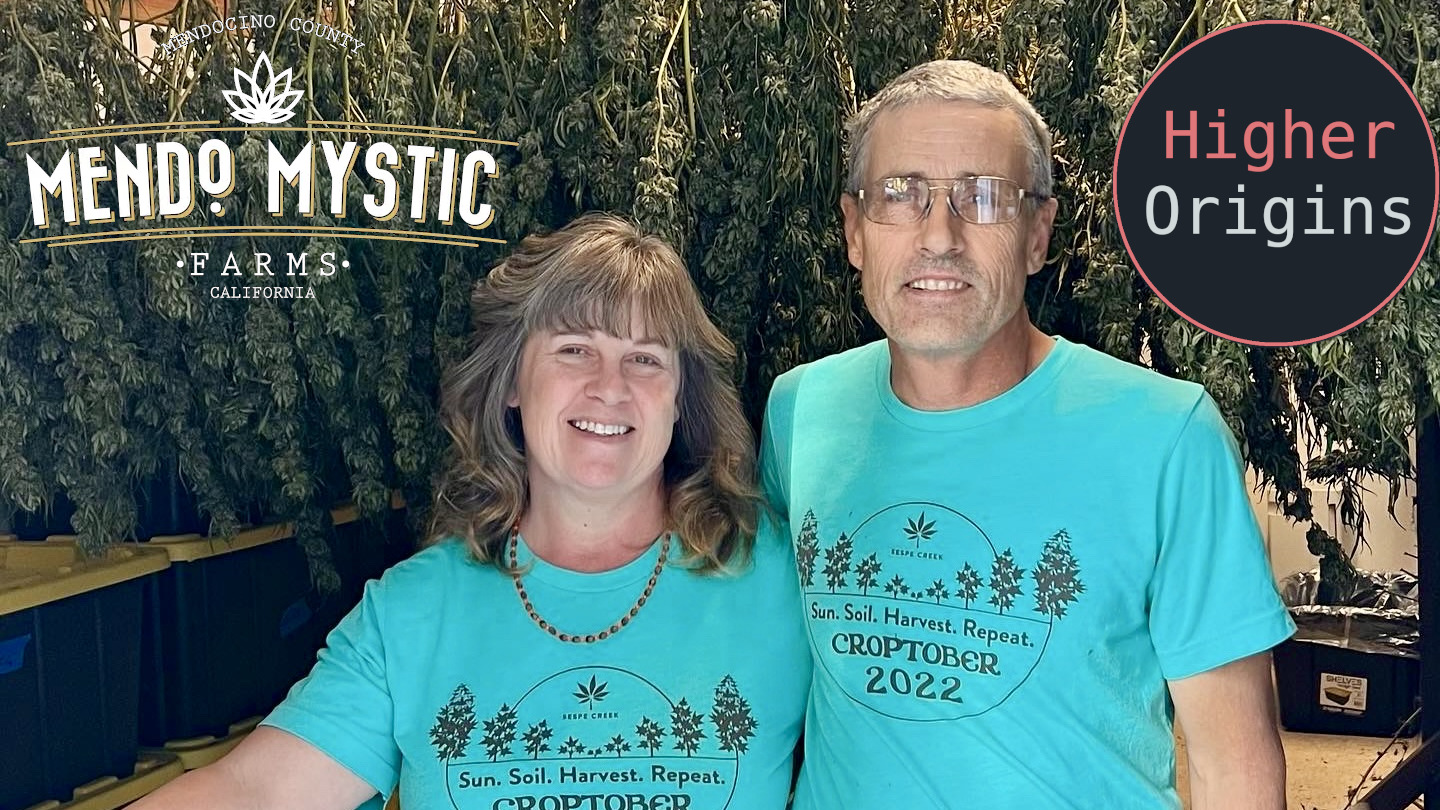Trying to grow your farm business while the plants are still in the ground and the bills are piling up isn’t an easy task. Today we want to explain our approach to help small farms make money, and how Higher Origins can help your farm enter the market. We’re going to go over the dynamics of wholesale and retail markets, self-branding, and sales strategies that we’ve learned in our 10+ years of watching this mess unfold. This article is largely written from the perspective of a small outdoor farm in the Emerald Triangle. If you have different ideas or perspectives, let us know, we’d love to include them in future articles!
Self-Branding: A Path To Success
Relying entirely on the current wholesale market to maintain a financially sustainable farm is often a recipe for bankruptcy. Distribution companies usually make their money on the margins, and with retailers often low on cash, the only place a distro can build a margin is by underpaying the farmer. We’ve been there. Around 2020, our founder’s family farm, Mendo Mystic, was getting rock bottom pricing from distributors and money was tight. Something needed to change, so we decided to self-brand, produce our own products, partner with a small local distro without huge margins, and represent our farm ourselves straight to retail, in order to keep some of that margin to pay our bills.
Here’s a quick high level breakdown of cost and revenue based on current late 2024:
Standard Jar Fixed Costs
Volume: 128 3.5g jars to 1 lb
Jar & Lid* - $1.12 per unit *(includes $0.30 extra for supplier applied labels)
Lab Testing - $0.78 per unit
Distribution - $1.00 per unit
Estimated Total Standard Jar Fixed Costs: $2.90 ($371 per lb)
Standard Pre-roll Fixed Costs
Volume: 454 1g prerolls to 1lb
Tube & Seal* - $0.74 per unit *(includes $0.30 extra for supplier applied labels)
Pre-roll Cone - $0.11 per unit
Lab Testing - $0.22 per unit
Distribution - $0.40 per unit
Estimated Total Standard Pre-roll Fixed Costs: $1.47 ($667 per lb)
Revenue, Fees, and Testing
$10 wholesale price per eighth sold to a retailer (~$1,280 per lb)
$4 wholesale price per 1g pre-roll sold to a retailer (~$1,816 per lb)
10% distribution fees
4 lb (512 jars) testing batches
$450 lab test per batch
8ths Example: Assuming you turn a 5 pounds into 8ths, and you pack them yourself for no labor cost, with these numbers the breakdown will be:
Top line revenue of 5 lbs sold to retailer: $6,400
Fixed costs: $1,855
Top line profit: $4,545
Per lb: $909
Prerolls Example: Assuming you turn a 5 pounds into prerolls, and you pack them yourself for no labor cost, with these numbers the breakdown will be:
Top line revenue of 5lbs sold to retailer: $9,080
Fixed costs: $3,334
Top line profit: $5,746
Per lb: $1,149
Depending on the niche you choose, these costs change dramatically. If you choose to outsource the production/manufacturing of your retail products you should expect a “per touch fee” that ranges between $0.50-$1.00 per touch point depending on the product type and generally is required upfront to produce the products. Product types like prerolls require more touch points so don’t be fooled by the per lb price if you choose to have them made for you.
So far this experiment has been successful. We’ve been getting fair prices for our 8ths and prerolls around the state, getting paid more consistently, and have a much better understanding of our supply chain and who’s in it. This self-branding model includes the following steps:
Branding: Figure out what your brand’s visual style, logo, and focus will be. The best way to do this is just be straightforward and keep it honest to who you are- your brand is a fashion statement of your values and aesthetic- it should be able to represent you as well as you can represent it. You’ll need to come up with some ideas for a logo and likely work with a designer to get one drawn up.
Development: Here’s where you figure out what you’re actually going to sell. Consider your product, available resources, personal tastes, and other products you’ve seen on the market that you appreciate. While farms are allowed to do preroll and 8th packaging by the State, local jurisdictions may restrict this. If at all possible in your area, we recommend packing them yourself to avoid costly external manufacturing costs. 8ths are easier to pack than prerolls, but have more expensive packaging.
Packaging: Once you know what you’re going to make, you need to figure out how it’s going to be packaged. This is a balance between cost, style, and volume. Packaging gets cheaper the more you buy, so if you’re producing a lot, you can get bulk discounts. A useful strategy here is to collaborate with fellow farms who use the same packaging to split a larger order to reach higher discount levels. If you want to differentiate your brand with a fancy package, that costs more, but also may attract more customers. Whatever type of packaging you choose, you’ll need to get the package or label designed and printed with your logo, artistic flair, and information about the product. Depending on who you hire to do this, packaging design can cost hundreds of dollars per package, but you can save money if you use stickers instead of printed packaging, especially if you apply the stickers yourself.
Production: It’s time to prepare your products. Set up a clean and comfortable work area and stage your cannabis, tools, and packaging. Experiment a bit to figure out how to make your products consistently and efficiently. Once you’ve got your process perfected, start production. Remember that when you are first starting in self branding, sales may be slow, so only make what you know you can sell quickly, so your customers will get fresh products.
Testing: Once you’ve gotten your product made, it’s time to get it tested. The results of this test apply to the entire source batch of the samples, (up to 50 lbs of cannabis), and last for 12 months before this batch needs to be re-tested. While retesting is an option, you need to get state approval to retest after the time runs out, which is a hassle, so most farms just destroy their material after a year.
Outreach and marketing: This is the part of the process that we’ve created Higher Origins to help with. We’ve broken down the specifics in the sections below, but the main point to take away is that marketing requires proactive outreach, networking, and research. Retailers will not buy your products if you do not actively and thoughtfully promote them: if you remain passive and do not actively promote, you will remain stuck in the wholesale market getting underpaid.
How to Get To Market With Higher Origins
Creating your Higher Origins Page
Smaller farms are under-represented in consumer-focused sales, which has resulted in most consumers not fully understanding how the cannabis they consume is produced. Having a page on Higher Origins enables farms to showcase their products, strains, and story, and educate their consumers.
Your page automatically showcases products from your farm and directs consumers to shops that stock these products. Consumers can learn more about the farm and view details about each product by navigating through the various tabs. Check out Mendo Mystic’s page to get an idea of what this looks like:

Getting a Higher Origins Page is as simple as signing up for Higher Origins for free, and adding a simple description, about us text, and profile/header image. Once updated your page will be visible to anyone. In the next section we’ll go over creating & listing products.
Click Here For a Step by Step Guide on Creating a Higher Origins Page
Listing your Products
The core of using Higher Origins is accurate and high quality product listings which can be seen by buyers on the Marketplace or through Menus. This starts with a high quality picture. Too many times over the years we’ve seen farms with great product fail to sell because they use low quality images that fail to accurately represent their cannabis. Think of cannabis buyers as customers in a restaurant: if the food looks bad they’re not ordering it. We highly recommend practicing your product photography if you have the time. Most newer flagship smartphones have excellent cameras and you can find guides on how to use them to their full potential online. It helps to set up a small desktop photo booth with a good light, which you can get cheaply on Amazon, or make yourself with some poster paper and a lamp. Here are some useful links:
https://gentlemantoker.com/blogs/how-to-take-good-photos-of-weed
https://www.leafly.com/news/industry/5-smart-phone-hacks-for-better-cannabis-photos
Once you’ve got good pictures, add them to a new listing on Higher Origins. We recommend at least 3 pictures, one close up of the cannabis, one of the packaged product, and one of the plant in full bloom.
In addition to pictures, you need to write a description. Here’s where you can introduce the product to customers. Talk about the flavor, smell, experience, cultivation methods, lineage, and anything else that explains the product’s unique qualities. Keep in mind your brand identity when writing your description- your writing should share a similar style across your online brand presence.
Finally, product listings contain other information about the product- like the price, potency, strain, unit size, and other data. All of this helps inform the buyer of what you’re selling and helps them make the decision to place an order with you.
Click Here For a Step by Step Guide on Listing your Products
Creating & Curating Menus
Menus are the primary tool we’ve built for reaching out to buyers. Once you’ve listed all the products you want to sell, you can combine them into a menu. You can create different menus, allowing you to market different products at different prices to different buyers. Our menus consist of an interactive list of product listings, so buyers can order straight from the menu. You can share these menus however you want using the link. These menus will stay up until you take them down, and viewers will see any changes you make, so people you give the link to can check it once in a while to keep an eye on what you’re selling. This simplifies the process of communication between buyers and sellers- less phone tag and requesting information- everything is complete and on demand.
Click Here For a Step by Step Guide on Creating & Curating Menus
Finding Buyers
There are currently over 1600 retail licenses of various types active in California. Here’s a few tips to consider when you’re deciding on which ones to reach out to:
Use your network: Ask around to other farms or brands you know who are selling through that retailer and ask for a reference or introduction. Cannabis is a very small industry, and the friend of a friend connection is always worth taking advantage of if you have it.
Do your brand research: Does your brand match what the retailer has in stock or is their bestseller? Go on their website or online storefront and check out what they are selling, for how much, and what’s on sale. If you see very few products from small farms on their shelves, that could go either way: it’s either an opportunity to fill a gap in their offerings or a sign they aren’t willing to work with smaller brands. Consider the reputation of the chain and the brands it sells- do you want to be associated with them? Read their reviews on Google as well- if they can’t keep customers happy they probably can’t keep suppliers like you happy either. If the retailer is part of a chain or clearly has some big money behind it, look up who owns them and look for headlines- the larger and more corporate a retail chain, the less likely they are going to be able to work equitably with small farms because they are used to larger economies of scale.
Do your price research: If small farm brands are heavily discounted on their site, or sell for a low price, it might mean that they’re not willing to give you a good deal, or small farm product just doesn’t sell well in their area or to their customer base- usually they’ll sell a product for at least 100% markup over what you sold it to them for, so cut the listed price before tax of similar products in half or more to estimate what you might get paid per unit. Ask around to see if this retailer is good at paying their bills- the last thing you want is to become a casualty of the AR crisis. There are several cannabis credit organizations out there, including
Go by region: Start looking in the regions you’re most familiar with or travel to often- if you’re always going to Santa Cruz to surf and know the area, start with retailers there. A local connection of any kind can be a good foot in the door to build a relationship from.
Consider location and saturation: Larger cities can be more competitive and harder to get into retail in, OR they may be having problems keeping weed on their shelves. Determining what the market is like in a place is a big factor in how much luck you’ll have selling there. Smaller independent retailers in bedroom communities might be easier to sell to than downtown chain stores. Likewise, consider the distance from your location- sending weed the length of the state involves higher transport mileage costs, so consider starting closer to home within a couple hundred miles.
Outreach to Buyers
Once you’ve got a list of promising retailers, it’s time to get in touch with them. There’s no perfect method since every one is different, but here’s some tips we’ve found that can increase your odds of getting a sale.
It’s a process: Retailers won’t buy immediately, they often want to get a sample transferred to them first and will sometimes sit on placing an order to see what the market does and what their cash on hand will be. Basically, it can take a while to get to a yes, sometimes weeks or even months. Make sure they have access to your up-to-date Higher Origins menu and don’t be a stranger- one single introduction rarely leads to a sale, you may have to reach out multiple times. Be patient but sell actively.
Timing is everything: When you get in touch with a buyer is an important factor to consider. Depending on what time of year it is, what sort of harvests are happening, and how close you are to a big sale day like 4/20 or Black Friday will really affect the amount of attention a buyer has for sellers. Retailers usually pick up their stock for busy sales days a month or two in advance, so calling April 10th with weed to sell may not be the best strategy. When in doubt- ask! Buyers are there to buy and will usually let you know their seasonal schedule.
Call ahead, go in person: If you have the ability, time, and cash to hit the road for sales, going into the brick and mortar location is a great way to catch the vibe of a store and it’s staff. Give them a call a few days beforehand to ask if they have a buyer who comes in on a schedule so you can try and catch them. Even if you miss the buyer, take time to chat with the staff and make an impression. A good strategy is to give them a business card with a QR code to your Higher Origins page-
or use the tried and true method of bringing them a box of donuts
A Note on Payment
Getting paid is never a guarantee in cannabis. This is why we STRONGLY suggest you only accept Cash On Delivery (COD) terms from any retailer or wholesaler you work with. However, we understand that not all merchants are willing to agree to this- either because they can’t or they simply don’t operate like that. Trust operates on a case-by-case basis, and doing due diligence is mandatory these days. If you must accept something other than COD, keep the term as short as possible, and ask as many trusted people as you can about the buyer. There are multiple credit monitoring groups in California that are working to identify bad actors, and some large distro companies are also working on this. We can't vouch for any of these credit groups at this stage but they are worth a look, especially if people you trust have had good luck with them.
Why Grow With Us
Our roots are in Mendocino County, we’re both born & raised in Willits/Laytonville (Check out our FAQ). We have zero aspirations working with farms outside of California, our growth and goals solely revolve around you. We’re not a large VC-backed software company looking to compete across every market. Our goal is to build a platform that allows farms to build an audience, simplify their sales processes, and provide any additional tools that are needed to navigate the challenging cannabis market in California.
We should make it clear: the above self-branding strategy can be a big step, especially if you're a small farm with limited resources. It's working for us, but we can't guarantee that it will work for every farm every time, and it is a lot of additional work, but it has the potential to make you a lot more money. At the end of the day, it's up to you to decide if this approach is right for you.
Higher Origins is live right now, and you can start using it for free, right now! The features listed in this article are all available, and we're adding more regularly, including new searches and insights. You can sign up here if you're a California licensed cannabis business, and getting set up only takes a few minutes. We have a frequently updated Documentation page that explains how everything works. Since this product is specifically built to help California farms make money, we're always open to feedback and suggestions- let us know if we need to fix or add anything! If you'd like to help us keep the lights on, you can become a Supporter here.
Stay warm, and keep growing!
-The Higher Origins Team

